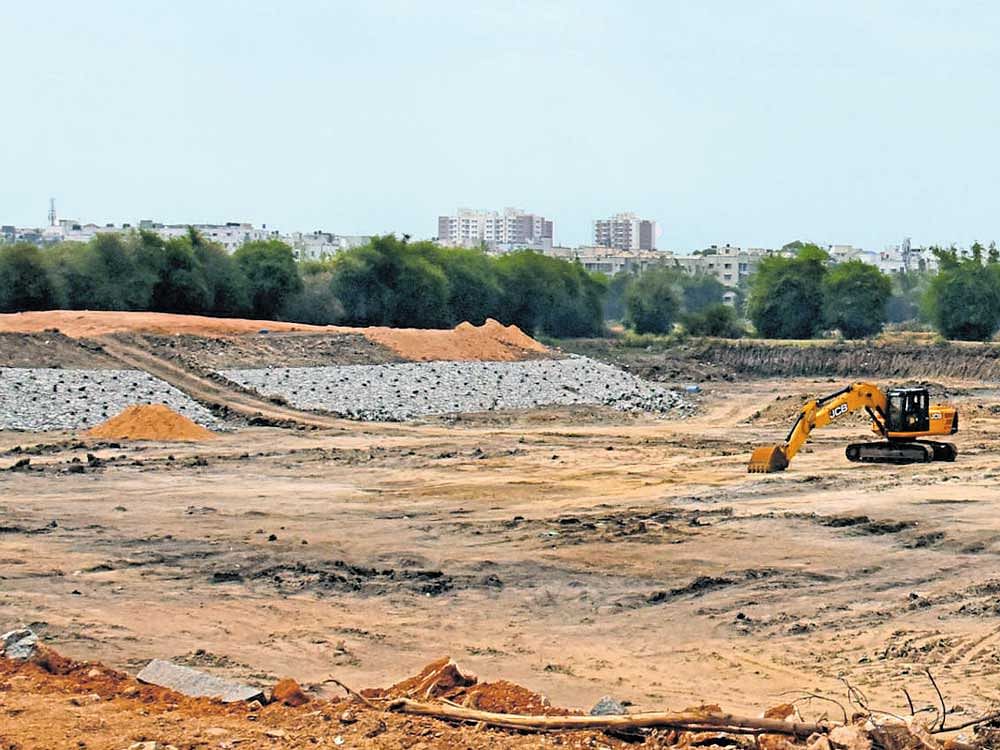
Madiwala lake now has an enclosure to hold treated sewage and flood water coming in from Sarakki and Hullimavu. Twelve-foot deep and 10 acres wide, the space has come up to the south of the lake, with the authorities referring to it as an additional catchment.
The space was created by the Karnataka Lake Conservation and Development Authority (KLCDA) under the guidance of Prof C R Babu of Delhi University.
Babu is helping create a biodiversity park at Madiwala, on the lines of the one on the banks of the Yamuna in the national capital.
“With this catchment, we can ensure excess water from Sarakki and Hulimavu will not flood areas near the Central Silk Board,” G Vidyasagar, Chief Executive Officer, KLCDA, told DH.
Kodichikkanahalli, one of the worst affected areas last year, remains vulnerable, though. The drain has still not been fixed, and it is up to the Bangalore Water Supply and Sewerage Board to attend to it, he said.
How it works
Just a week before the onset of monsoon (towards the end of May), the check dam separating the catchment and the lake will be opened.
Some lake water will enter the desilted catchment and the water level in the lake will go down. This is also expected to help in desilting the bund area.
Desilting will be completed within three days of the onset of monsoon, and treated sewage water will enter the catchment area and mix with the lake water. The catchment will be able to hold about 5 cm of rainfall, Babu added.
At present, no water, including sewage water, enters Madiwala lake, he explained. “It goes to Bellandur and Agara through drains which caused flooding last year,” Babu said.
DH News Service
First time
This is the first time such an unusual engineering approach is being used to increase the water-holding capacity of the Madiwala lake. Creating the catchment was not a part of the biodiversity park coming up at the Madiwala lake.
“Considering last year’s flooding, we decided to extend the catchment,” Prof Babu of Delhi University, working on the project, told DH.